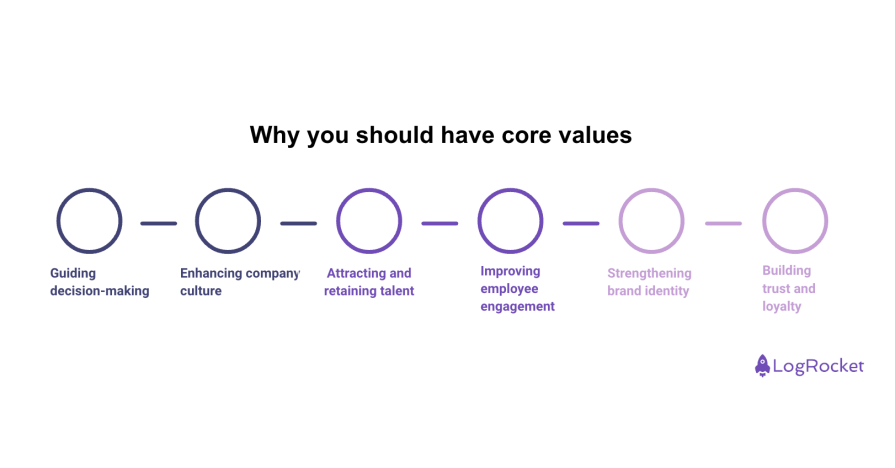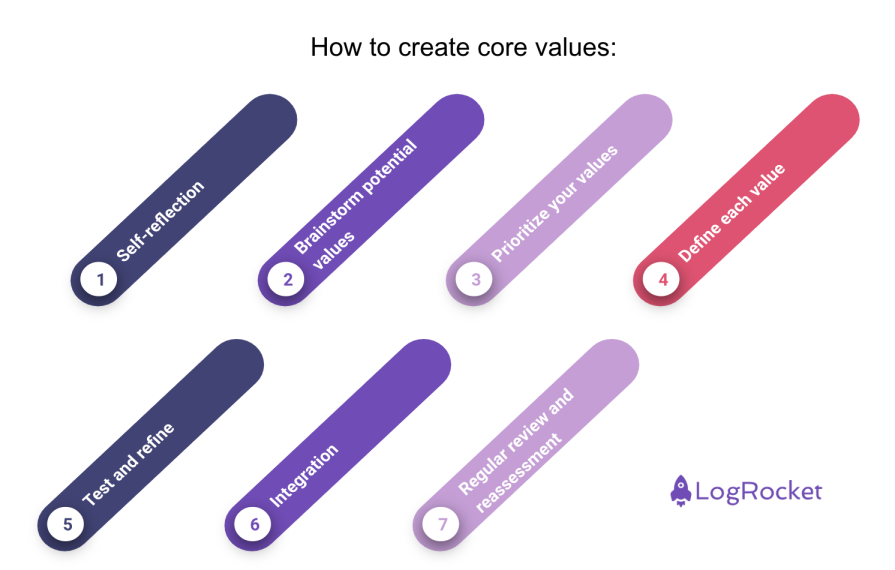If you ever find yourself working at Amazon then as you go through your onboarding you’ll encounter Amazon’s core values, which are: customer obsession, long-term thinking, eagerness to invent, and pride in operational excellence.

These values guide the Amazon teams as they go about their day-to-day activities, running through the products they produce, and through the services they offer. As a team member, you’d be expected to uphold these during your time in the organization.
Why has Amazon created these core values? Should all organizations have core values, and if so, why?
In this article, you’ll learn what core values are and how you can make them meaningful for your company.
Core values are the principles that guide all of a company’s actions. They serve as cornerstones on which all activities rest and can never be compromised.
Core values provide all individuals within an organization a framework to make their own decisions on a day-to-day basis, which will align with all other individuals within the organization, and deliver a coherent approach to delivery.
Having clear core values provides numerous benefits to an organization. These include:

With core values in place, organizations have a compass for making decisions, ensuring that choices always align with the company’s principles and long-term goals. At Amazon, decisions today need to be made with a view to how this decision will impact the organization well into the future.
Core values help establish a positive and consistent company culture by defining what’s important and how employees should behave. For Amazon, a core value such as “pride in operational excellence” will ensure that all members of the team strive to perform with excellence and help teams make positive contributions in this area.
When organizations have clear core values, you start to attract like-minded individuals for whom the company’s principles resonate, leading to higher employee satisfaction and retention. Amazon’s “eagerness to invent” will resonate with creative and forward-thinking individuals who are on the lookout for making improvements or pursuing new opportunities, and adhering to the values ensures these individuals stay in the organization and contribute to on-going future success.
When employees understand and believe in the company’s values, they’re more likely to be engaged, motivated, and committed to their work. If you’re working at Amazon and have the core value of “customer obsession” then you can use this to be driven in your role to deliver additional value to your customer as you’re acutely aware of the importance of customer obsession within the business and know your efforts will be well received.
Core values are not just internal signals, but can also differentiate a company from its competitors and help build a strong, authentic brand identity that resonates with customers and partners. As an Amazon customer, you can interact with the company safely in the knowledge that any product you purchase will have to be considered with the long-term in mind, which means you know that the purchase of a Kindle will be supported by ongoing book releases or a subscription to Twitch will provide a constant stream of new content.
Introducing core values and then consistently living by them builds trust with customers, employees, and stakeholders, which fosters loyalty and long-term relationships. Amazon customers know how hard the company works to provide value to its customers and as such are very loyal and will add service after service over time.
Here are some examples of clear and impactful company core values from well-known organizations.
As we’ve seen, identifying and defining core values is a crucial process for organizations for a variety of purposes. The question is, how do you create and then implement core values into your company? To this end, you can try the following strategies:

Core values have the opportunity to add a variety of benefits across your organization. From creating loyalty to strengthening brand identity, you can ensure that the core values you identify are truly reflective of what your organization stands for. This will ultimately provide a strong foundation for all future actions and decisions.
Featured image source: IconScout

LogRocket identifies friction points in the user experience so you can make informed decisions about product and design changes that must happen to hit your goals.
With LogRocket, you can understand the scope of the issues affecting your product and prioritize the changes that need to be made. LogRocket simplifies workflows by allowing Engineering, Product, UX, and Design teams to work from the same data as you, eliminating any confusion about what needs to be done.
Get your teams on the same page — try LogRocket today.

A practical framework for PMs to use AI in ideation without sacrificing judgment, strategy, or decision quality.

A practical five minute revenue estimation method to help product managers compare ideas, drop low impact features, and prioritize smarter.

A practical guide for PMs who want to stop being bottlenecks, delegate smarter, and lead teams effectively with a clear ownership framework.

Stop letting unreliable data block features. Treat data as inventory to track quality, ownership, and ship with confidence.